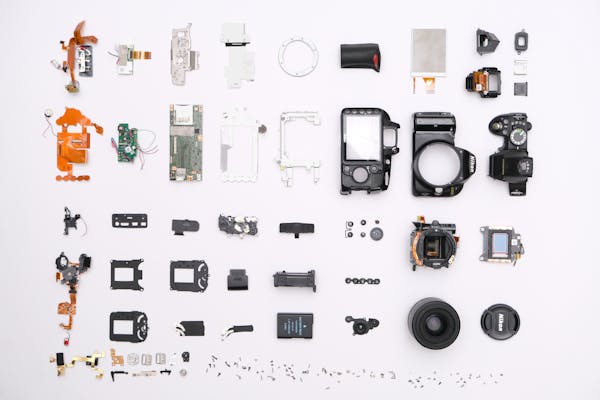Introduction
Security Cameras Without WiFi have become an essential part of modern security systems, offering peace of mind and a deterrent against theft and vandalism. Security Cameras Without WiFi While many people are familiar with WiFi-enabled cameras, there’s a growing interest in security cameras that operate without WiFi. These cameras provide an alternative for those in areas with poor internet connectivity or for those who prefer a more private and secure surveillance system.
Why Choose Security Cameras Without WiFi?
Choosing a security camera without WiFi can be beneficial for various reasons:
- No Internet Dependency: These cameras don’t rely on internet connectivity, making them ideal for remote locations.
- Enhanced Privacy: Without internet access, the risk of hacking and unauthorized access is minimized.
- Reliability: They continue to function during internet outages.
- Ease of Installation: Often easier to set up as they don’t require network configuration.
Types of Security Cameras Without WiFi
Wired Security Cameras
Wired security cameras connect directly to a recording device or monitor through cables. They are known for their stable and high-quality video transmission.
Analog Cameras
These cameras transmit video over coaxial cables to a DVR (Digital Video Recorder). They are cost-effective and have been used for decades in various surveillance systems.
IP Cameras with Local Storage
IP cameras typically use WiFi, but some models offer local storage options such as SD cards, allowing them to operate independently of the internet.
Cellular Security Cameras
These cameras use cellular networks to transmit video. They are perfect for locations without internet access but where cellular service is available.
Battery-Powered Cameras
Battery-powered security cameras can operate without being connected to a power source, providing flexibility in placement. They often record video locally or use cellular networks for transmission.
Technical Specifications

Resolution
- Standard Definition (SD): Suitable for basic surveillance needs.
Storage Options
- SD Cards: Commonly used in IP cameras for local storage.
- DVR/NVR: Digital Video Recorders (DVR) and Network Video Recorders (NVR) are used with wired and analog cameras.
- Cloud Storage: Some cameras offer optional cloud storage for backup purposes.
Power Supply
- Battery-Powered: Offers flexibility in camera placement.
- Wired Power: Provides a constant power supply, ideal for continuous surveillance.
- Solar-Powered: Environmentally friendly option for outdoor cameras.
Connectivity
- Wired: Uses physical cables for data transmission.
- Cellular: Uses mobile networks for remote locations.
- Standalone: Operates independently with local storage.
Applications of Security Cameras Without WiFi
Residential Use
For homeowners looking to enhance security without relying on the internet.
Business Surveillance
Ideal for businesses in areas with unreliable internet connectivity.
Rural and Remote Areas
Perfect for farms, ranches, and remote properties.
Construction Sites
Ensures the security of construction sites where internet access is unavailable.
Temporary Installations
Useful for temporary events or locations where installing WiFi is impractical.
Benefits of Security Cameras Without WiFi
Increased Privacy and Security
Without an internet connection, these cameras are less vulnerable to hacking.
Reliability
They continue to function during internet outages, ensuring continuous surveillance.
Flexibility in Placement
Battery-powered and solar-powered options provide flexibility in camera placement.
Cost-Effectiveness
Often more affordable as they don’t require internet service or extensive network infrastructure.
Challenges and Limitations
Limited Remote Access
Without internet connectivity, remote access and monitoring are limited.
Storage Limitations
Local storage options may require regular maintenance to prevent data loss.
Power Supply Issues
Battery-powered cameras need regular recharging or replacement.
Initial Setup
Wired systems may require professional installation.
Latest Innovations in Security Cameras Without WiFi
Advanced Motion Detection
Modern cameras offer sophisticated motion detection capabilities, reducing false alarms.
High-Resolution Imaging
The latest models provide 4K resolution for detailed surveillance.
Extended Battery Life
Innovations in battery technology are extending the life of battery-powered cameras.
Hybrid Models
Some cameras combine local storage with optional cloud backup for added security.
Future Prospects
Improved Storage Solutions
Development of larger and more reliable local storage options.
Enhanced AI Capabilities
AI-driven features such as facial recognition and advanced analytics.
Integration with Smart Home Devices
Potential for integration with other smart home devices for a comprehensive security system.
Energy-Efficient Models
Focus on developing more energy-efficient models to reduce power consumption.
Comparative Analysis
Security Cameras With WiFi vs. Without WiFi

- Privacy: Non-WiFi cameras offer better privacy.
- Reliability: Non-WiFi cameras are more reliable in internet outages.
- Accessibility: WiFi cameras provide better remote access.
Wired vs. Wireless Security Cameras
- Installation: Wireless cameras are easier to install.
- Stability: Wired cameras offer more stable video transmission.
Analog vs. IP Cameras
- Cost: Analog cameras are more affordable.
- Quality: IP cameras offer higher video quality.
User Guides and Tutorials
Wired Security Camera System
- Plan Your System: Determine the number of cameras and their locations.
- Run Cables: Install the necessary cables from the cameras to the DVR.
- Mount Cameras: Securely mount the cameras in their designated locations.
- Connect to Power: Ensure all cameras are connected to a power source.
- Setup DVR: Connect the DVR to a monitor and configure the system settings.
How to Maintain Battery-Powered Cameras
- Regularly Check Battery Levels: Ensure cameras are charged or replace batteries as needed.
- Clean the Lenses: Keep the camera lenses clean for clear video quality.
- Check Storage: Ensure local storage is not full and back up important footage.
- Update Firmware: Keep the camera’s firmware up to date for optimal performance.

